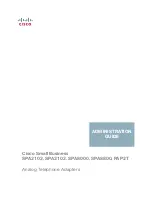
Equipment specification and operation
Page 17 of 64
Centralized Attendant Service Description and engineering
An RLT circuit consists of a trunk circuit at a Remote private branch
exchange (site) to be served by a CAS attendant and an interfacing trunk
circuit at the Main site, where the CAS attendant is located. The type of
circuit pack that can be used at either the Remote site or the Main site depends
on the distance between the Remote site and the Main site.
QPC250 Release Link Trunk specifications
A QPC250 RLT card contains two identical trunk circuits and common
circuitry mounted on a printed circuit board. The card can be inserted into any
peripheral equipment (PE) shelf slot. Each circuit on a QPC250 RLT card at
a Remote site interfaces with a CO trunk circuit at the Main site to allow
access to the CAS attendant. Each circuit on the QPC250 RLT card has the
following specifications:
Operation at the Remote site
Idle state
The RLT at the Remote site is connected to a CO trunk circuit at the Main site
by tip and ring leads. The RLT circuit provides open tip and ring leads during
the idle state.
Impedance
900
Ω
Loop limit
1400
Ω
at nominal –48 V
Leakage resistance
30,000
Ω
Ring trip
During silent or ringing intervals
Ringing voltage
85-V rms, 20 Hz superimposed on –48-V dc
Signaling
Ground start
Supervision
Normal battery conditions are applied (–48 V to
ring, ground to tip) when the interfacing CO trunk
circuit is to be seized
Power input from shelf
±
10-V dc,
±
6-V dc, –48-V dc, 85-V rms, 20 Hz,
superimposed on –48-V dc
Effective loss
0.5 dB at 1020 Hz (pads in), –1.5 dB (pads out)
Insertion loss
1 dB
Answer supervision
Does not reverse battery when the terminating end
answers
Disconnect supervision Does not momentarily open-circuit the tip and ring
leads on disconnect
EquipSp.BDY Page 17 Tuesday, January 14, 1997 9:16 AM





































